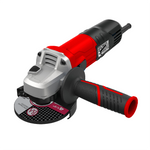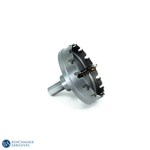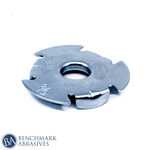
How To Identify When A Buffing Wheel Needs Replacement

Summary:
A buffing wheel should be replaced when it shows visible damage, such as cuts, scratches, or uneven wear. Other signs include reduced performance as evidenced by vibration or inefficiency, changes in shape such as warping or loosening, and degradation of the material where it becomes brittle or less effective.
When selecting a replacement, keep in mind the material, size, and grit that best suits your project's needs. Regular inspection and timely replacement of a worn buffing wheel are essential to maintaining safety and achieving the best polishing results.
It's critical to identify the warning signals of a buffing wheel needing replacement in order to guarantee both safety and optimum performance. In this blog, we will cover how to identify the signs when a buffing wheel needs replacement.
What are Buffing Wheels?
Let’s start by understanding what buffing wheels are.
Buffing wheels are the tools used to polish and finish the surfaces. They are specifically made of cloth, felt, and other soft materials and can be used mostly with polishing compounds. They are available in a wide range of shapes and sizes and can be used in a variety of applications, including polishing metal, plastic, and wood.
Signs When Buffing Wheel Needs Replacement
A buffing wheel requires replacement when it indicates signs of wear and tear that will eventually affect its performance and safety. Here are some of the signs that indicate your buffing wheel needs replacement:
1. Visible Damage
It is one of the crucial signs that your buffing wheel needs a replacement. See if it has any cuts, tears, fraying, uneven wear, and clogged debris, which can result in inefficient performance and impact its safety. The wheel's structure can be weakened by cuts and tears, causing it to break quickly. Fraying minimizes its effectiveness mainly at the edges and poses a safety risk.
Uneven wear refers to the damage on one side compared to the other side. This results in vibrations and uneven outcomes. Embedded or clogged debris in the workpiece can cause scratches and restrict the wheel's ability to polish. If you find any of these signs, it is essential to replace the buffing wheel immediately to avoid any accidents and achieve the best possible outcomes.
2. Reduced Performance
Reduced performance is another crucial sign to consider that your buffing wheel needs replacement. A correctly operating buffing wheel rotates smoothly. There are a number of reasons for the wheel's vibrations and imbalances, including uneven wear to the wheel's structure and clogged debris. Vibrations can make the buffing process uncomfortable and less accurate.
Excessive vibrations can also be difficult to handle, which eventually causes severe risks to the user and can damage the material. If you find your buffing wheel vibrating, you should immediately replace it.
3. Changes In Shape
Changes in shape can be seen clearly, and it’s a sign that you should replace your buffing wheel. A buffing wheel mostly has a distinct and uniform shape, whether it is tapered, flat, or crowned. However, the wheels may be distorted because of the number of variables used. Uneven wear can cause grooves and flat areas. Incorrect storage or impacts can cause dents or warps.
With years of use, the wheel's fiber or material deteriorates, which results in sagging or a loss of shape. These changes in shape might affect the wheel’s ability to get in contact with the workpiece. This will lead to uneven polishing, swirl marks, or even hard-to-reach areas. If your buffing wheel changes its shape, it's high time that you should replace your wheel for effective performance.
4. Material Degradation
It is the natural process of degradation of buffing products over a period, which indicates that you are required to change your buffing wheels. These wheels are made of different materials, including cotton, wool, felt, etc., and each has its lifespan. With multiple uses, the material’s fiber will break down and become brittle, frayed, and less flexible. As a result, buffing wheels become less effective and prone to breakage.
Once you notice that your wheel’s changing to a different texture, it’s time to replace your buffing wheels.
How To Choose A Replacement Buffing Wheels
Consider the following points while choosing replacement buffing wheels:
- Material: Material is the first thing to consider when selecting a buffing wheel. Select a material based on the workpiece material you are working on. Some of the materials include cotton, felt, foam, and wool.
- Size: the size of the buffing wheel should be based on the area you are working on or the size of the workpiece.
- Grit: When choosing buffing wheels, always consider the grit. Grit refers to the wheel’s abrasiveness. Finer grits are mostly used for polishing, whereas coarser grits are used for cutting and grinding projects.
We hope this blog will help you understand how to replace buffing wheels and how to choose the right wheel for your projects.



































































